|
Limitar tu búsqueda
[+–] Compilador o editor
[+–] Editorial
[+–] Fecha
[+–] Formato
[+–] Idioma
[+–] Tipo de documento
[+–] Tipo de recurso
|

|
|
Toward closing the evaluation gap: lessons from three recent impact evaluations of social programs in Latin America and the Caribbean
Despite recent growing demand from funders and governments, rigorous impact evaluations in Latin America and the Caribbean remain the exception rather than the rule. Many commissioned impact evaluations are methodologically weak, and thus only marginally useful in assessing the impact of social interventions. Other impact evaluations feature strong research methodologies at their conception, but...
|

|
|
|
|

|
|
Evaluating rural electrification projects: methodological approaches
In recent years, the international community has expanded efforts in program evaluation to improve the accountability of development projects. This paper presents approaches to implementing state of the art evaluations in rural electrification projects, taking into account specific challenges that researchers face in such interventions. II suggests an approach to assess impacts before an...
|
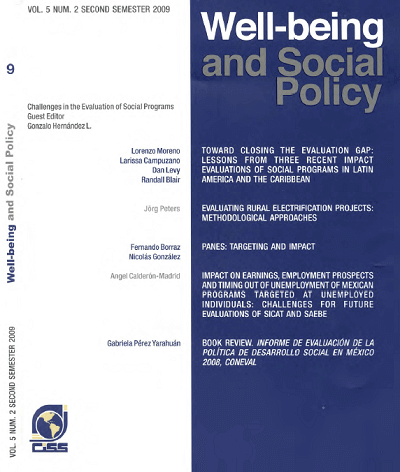
|
|
|
|

|
|
PANES: targeting and impact
This research paper intends to quantifit targeting performance in terms of the efficiency of the 1 National Plan for Social Emergency Assistance (PANES) implemented in Uruguay between 2005 and 2007 and determine its impact on relevant issues such as school attendance, child labor and the labor market. For this analysis , we used 2006 and 2007 Continual Household Survey (ECH) data.
Our outcomes...
|

|
|
|
|

|
|
Impact on earning, employment prospects and timing out of unemployment of mexican programs targeted at unemployed individuals: challenges
his paper presents estimates of the impact of programs for unemployed workers on the performance of program beneficiaries in Mexico. We emphasize the significance of applying methodologies capable of avoiding statistical bias attributable to unobserved variables when measuring the impact on earnings and allowing to us properly estimate unemployment duration and work status after exiting from...
|
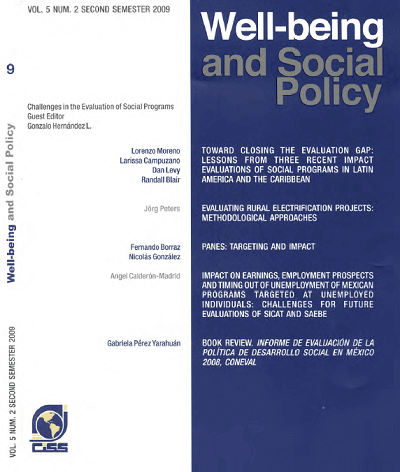
|
|
|
|

|
|
Book review. Informe de evaluación de la política de desarrollo social en México 2008, CONEVAL
The Evaluation Report on Social Development Policy in Mexico was published by the National Council for Social Development Policy Evaluation (CONEVAL) in 2008. The Council is one of the constituting elements of the new institutional framework to evaluate the public sector performance, particularly social development policies that were put in place mostly during the first decade of this century....
|

|
|
|
|

|
|
Natural disasters and poverty in Latin America: welfare impacts and social protection solutions
The Inter-American Conference on Social Security (CISS) and the United Nations Development Programme (UNDP) Office in Mexico jointly organized the conference “Natural Disasters in Latin America: Welfare Impacts and Social Protection Solutions” held in Mexico City in January 2010. The main objectives of the conference were to improve the understanding of (i) how natural disasters affect...
|
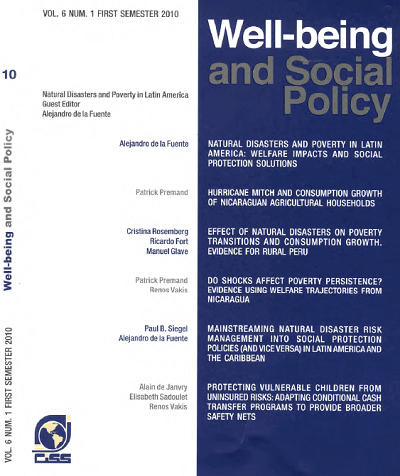
|
|
|
|

|
|
Hurricane Mitch and consumption growth of nicaraguan agricultural households
There is little micro-evidence on the persistence of natural disasters' welfare impacts. This paper assesses the effect of Hurricane Mitch on consumption of Nicaraguan agricultura) households. Mitch occurred in October 1998. Pre-post data is obtained from a nationally representative panel collected in 1998 and 2001. An additional survey was fielded in 1999 for households from the panel affected...
|
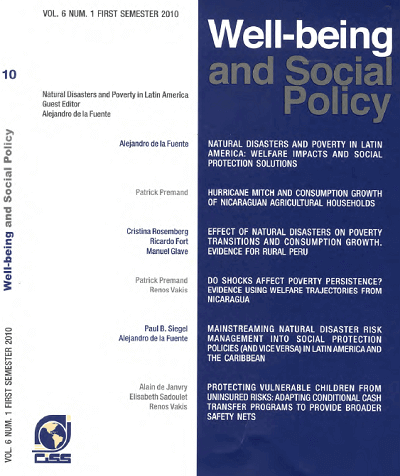
|
|
|
|

|
|
Effect of natural disasters on poverty transitions and consumption growth. Evidence for rural Peru
Natural hazards, an increasingly important phenomenon, have a direct impact at regional and household level. The growing incidence and persistence of natural events are strongly linked to increasing vulnerability of households and communities in developing countries. Previous socioeconomic vulnerabilities may exacerbate the impact of a specific event, making more difficult the process of...
|
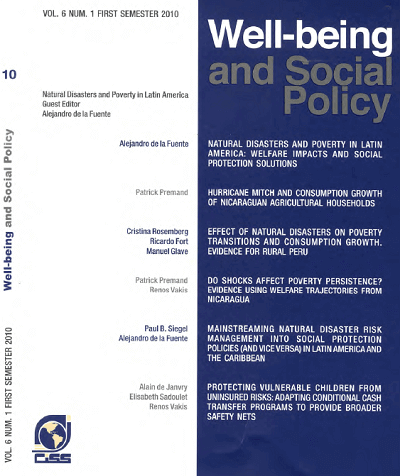
|
|
|
|

|
|
Do shocks affect poverty persistance? Evidence using welfare trajectories from Nicaragua
Shocks are often primarily associated with downward mobility or short-term movements in and out of poverty. However, households at the bottom of the welfare distribution are likely to face the most constraints to access insurance mechanisms. In this paper, we consider whether shocks directly affect poverty persistence. In order to analyze the impact of shocks on households’ welfare path over time...
|

|
|
|
|

|
|
Mainstreaming natural disaster risk management into social protection policies (and vice versa) in Latina America and the Caribbean
This paper presents and applies the social risk management (SRM) conceptual framework to examine links between disaster risk, hazards, vulnerability, risk management, and social protection (SP). The paper makes the case that it is important to mainstream social protection policies into the disaster risk management (DRM) agenda and, vice versa as a means to improve household and community...
|
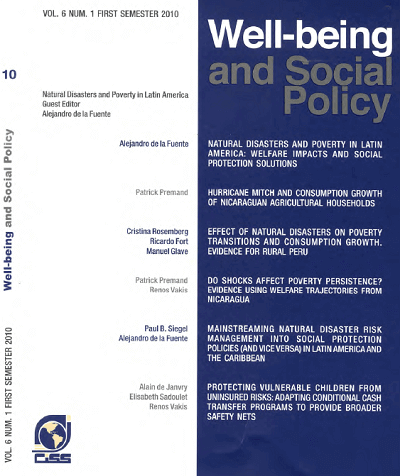
|
|
|
|

|
|
Protecting vulnerable children from uninsured risks: adapting conditional cash transfer programs to provide broader safety nets
Conditional cash transfer (CCT) programs have proved to be effective in inducing chronic poor households to invest in the human capital of their children while helping reduce poverty. They have also protected child human capital from the shocks that affect these households. In this paper, we argue that many non-poor households exposed to uninsured shocks have to use children as risk coping...
|
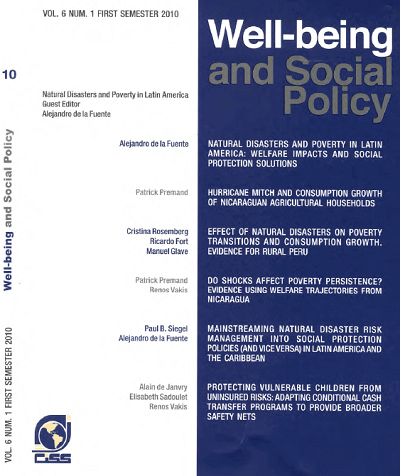
|
|
|
|

|
|
Introduction (On the studies presented at the International Conference on "Delinquency and Violence in Latin America and the Caribbean")
Crime has become the leading concern for citizens of the region and has been pushed to the forefront of the international policy agenda; what is more, the combination of very few success stories and abundant failures in curbing crime and violence has underscored how thin our understanding is and the difficulty of designing and implementing an effective strategy at the local level. This issue...
|

|
|
|
|

|
|
Análisis de la factibilidad de construir un sistema integrado de salud: implicaciones financieras y distributivas
El documento muestra proyecciones de gasto y de incidencia distributiva de un Sistema Integrado de Salud en tres escenarios básicos: status quo, un esquema de dos pilares (financiamiento de impuestos generales y gasto privado) y en un escenario de tres pilares (financiamiento de impuestos generales, seguridad social y gasto privado). El estudio, al presentar estas simulaciones, permite enriquecer...
|
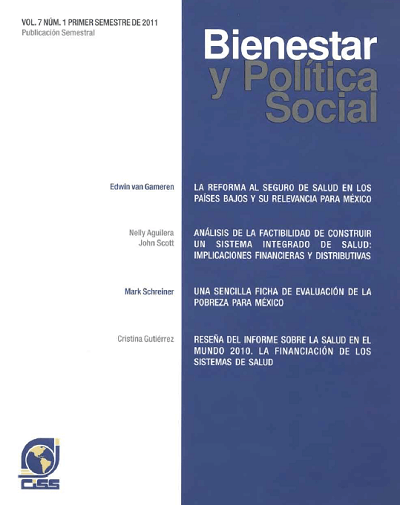
|
|
|
|

|
|
Inequidades en mortalidad infantil en Colombia: avances y desafíos después de una mayor responsabilidad de las autoridades locales
El objetivo de este documento es analizar la distribución espacial y temporal de la tasa de mortalidad infantil (TMI) a nivel municipal en Colombia antes y después de otorgar una mayor responsabilidad a las municipalidades en la administración de sus sistemas locales de salud. Utilizando técnicas de econometría espacial se encuentra que hay una concentración geográfica de la TMI que persiste en...
|

|
|
|
|

|
|
Reseña del libro Violence and social orders: A conceptual framework for interpreting recorded human history, por Douglas C. North, John Joseph Wallis y Barry R. Weingast
¿Por qué difieren las sociedades en cuanto a niveles de violencia? Esta es la pregunta que abordan North, Wallis y Weingast. Para obtener una respuesta, deben desarrollar una elaborada teoría sobre la forma en la cual las personas y las organizaciones que componen un grupo de seres humanos, renuncian voluntariamente a actuar de manera violenta a cambio de participar en una sociedad que ofrezca...
|
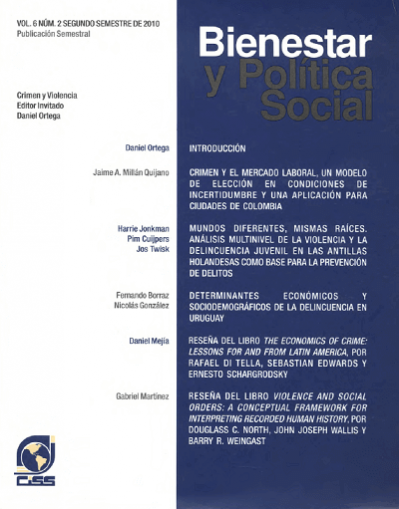
|
|
|
|

|
|
Cuba. Su sistema de seguridad social
En febrero de 1976 se promulgó la Constitución de la República de Cuba vigente, la cual consagra entre los derechos, deberes y garantías fundamentales en ella regulados, la seguridad social para todo trabajador impedido de laborar por su edad o invalidez y para sus familias en caso de muerte; y la asistencia social para los ancianos sin recursos ni amparo y para cualquier persona no apta para...
|

|
|
|
|

|
|
Salud demorada es justicia negada
En este texto se presenta el tema fundamental sobre, “Políticas de la salud y equidad”, como un asunto que se apoya fundamentalmente en la hipótesis de que pueda progresarse si nuestros pueblos logran en alguna medida la justicia social mediante una adecuada política sanitaria. La negación de esa justicia es resultado de la demora en lograr la salud para un gran número de nuestros habitantes....
|
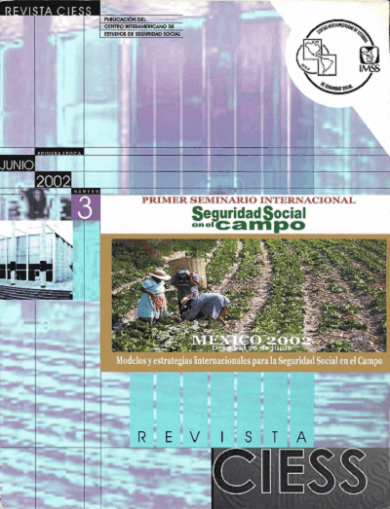
|
|
|
|

|
|
Algunos elementos para una política pública de seguridad social en el campo
El propósito de este artículo es aportar algunos de los elementos necesarios para configurar una política pública incluyente, en el terreno de la Seguridad Social para el campo, que sea de utilidad y sirva como insumo para alentar la discusión desde una perspectiva internacional.
En las siguientes páginas se realiza una revisión general del contexto del campo mexicano y del perfil de los...
|
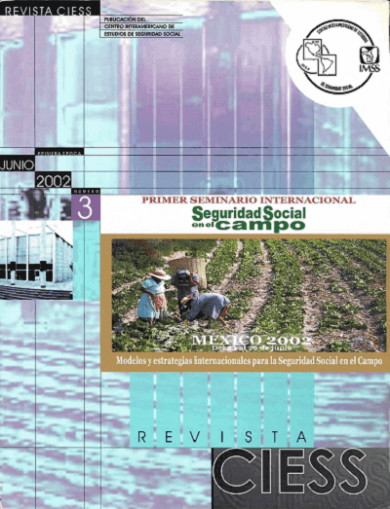
|
|
|
|

|
|
El programa de asistencia familiar
Este trabajo consta principalmente de dos partes. En la primera se detalla cómo funciona el sistema y cuáles son sus aspectos normativos; en la segunda, se explica la reforma de los procesos de otorgamiento de todas las prestaciones, incluidas las Asignaciones Familiares.
|
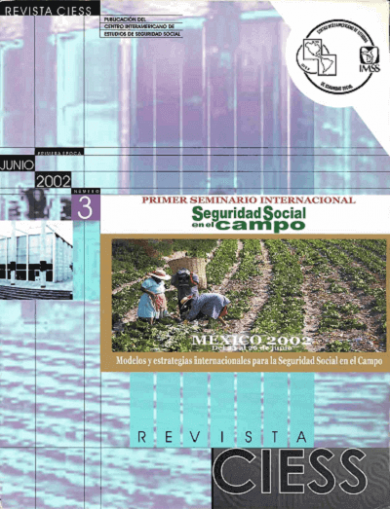
|
|
|
|

|
|
Los mecanismo de afiliación, cotización y auditoría para el aseguramiento de los trabajadores agrícolas en Brasil: Una experiencia vigente
El objetivo de esta presentación es dar a conocer la experiencia brasileña con relación a la protección social en el área rural, aún insuficientemente evaluada, pero bastante exitosa. Inicialmente, se presentan algunos datos sobre Brasil, para tener una idea de su dimensión, destacando su principal característica que es la enorme desigualdad social, objetivo de todo el trabajo desarrollado, en el...
|
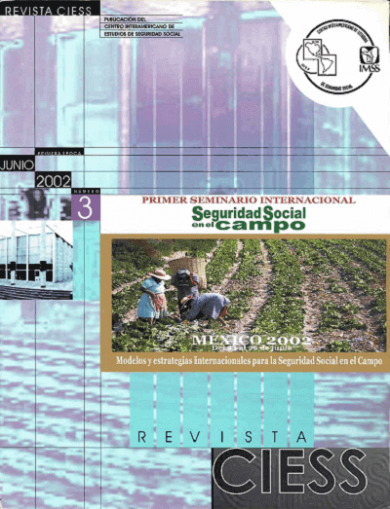
|
|
|
|
|